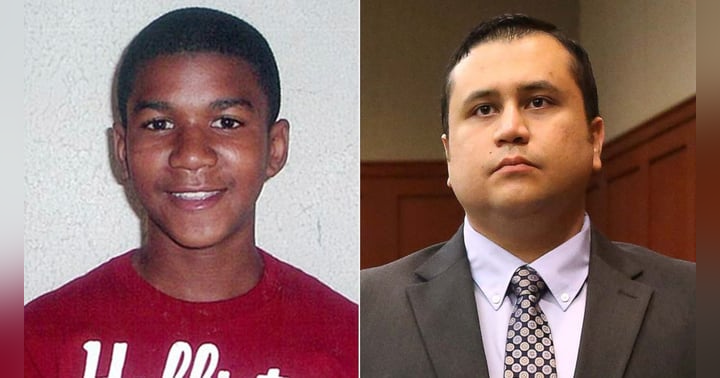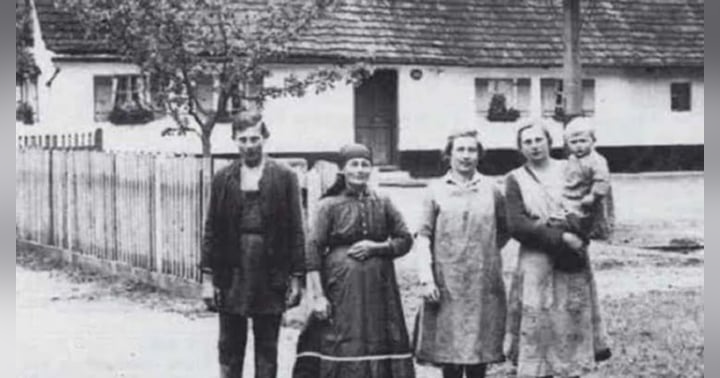The Cedar Mill Murders: A Family Tragedy That Shook Oregon

In the quiet, tree-lined suburb of Cedar Mill, Oregon, Dickson and Arlene Janowski lived what appeared to be a comfortable, private life. Their split-level home sat far from the road, nestled behind thick shrubs, offering the kind of seclusion that most would associate with peace and security. But on the night of February 17, 1985, that isolation became a killer’s advantage.
At midnight, in a home tucked away from prying eyes, the Janowskis were brutally murdered—shot multiple times in what initially appeared to be a home invasion gone wrong. Yet, as investigators unraveled the details, it became clear that this was no random act of violence. This was something far more chilling: a calculated double murder orchestrated by their own son.
A Shocking Discovery
The next afternoon, at 12:30 p.m., a frantic 911 call came into the Washington County Sheriff’s Department. The caller, 18-year-old Kenneth Janowski, told the dispatcher he had just returned home and found his parents murdered. He was near hysteria. Officers rushed to the scene, where they were met by Kenneth outside the family home.
But something was off.
Littered across the lawn was an odd, carefully placed trail of brown-paper grocery bags leading away from the house. Inside, there were no signs of forced entry, but the home had been ransacked—as if someone wanted it to look like a burglary.
Then, in the master bedroom, officers found Dickson and Arlene Janowski.
Arlene lay on the bed, shot three times in the head.
Dickson was sprawled on the floor, shot at least ten times, his body surrounded by a massive pool of blood.
The level of overkill on Dickson struck detectives immediately—was it a crime of personal rage? And why was he on the floor while Arlene was in bed? Had she been attacked while sleeping? Had he tried to escape?
Investigators had questions, but few immediate answers.
The Hunt for a Killer
Detectives Robert Neilsen and Paul Lazenby quickly assembled a forensic team, scouring the crime scene for evidence. Blood spatter patterns, bullet trajectories, and the lack of forced entry suggested the victims had been targeted deliberately.
But by whom?
Initial suspicions pointed toward a stranger-on-stranger crime, given the staged burglary scene. However, as detectives began interviewing neighbors, they realized something chilling:
No one had heard the gunshots.
Twelve rounds, all fired inside a relatively quiet home, yet not a single neighbor reported hearing a disturbance. The level of control suggested someone who knew the victims well—someone who was comfortable enough to take their time.
Kenneth’s Alibi and the Cracks in His Story
Naturally, investigators turned their attention to Kenneth. He was the one who had discovered the crime scene, and he had conveniently been away the entire night—which meant he had an alibi.
Kenneth claimed that from 10:00 p.m. on Saturday, February 16, until the following afternoon, he had been out cruising on a popular Portland strip, where he met up with a girl named Maria Spinetti and spent the night with her. Maria, along with other friends, confirmed his whereabouts.
With no concrete evidence against him, detectives were forced to consider other leads. They combed through the neighborhood, looking for suspicious cars, unfamiliar faces—anything that might point to an outsider.
But they found nothing.
And that was the first major red flag.
A Troubled Family History
As investigators dug deeper into the Janowski family dynamics, they uncovered a history of abuse, alcoholism, and tragedy.
Kenneth’s older sister, Katy, had died at 15 under tragic circumstances. After a falling-out with her parents, she moved out, later developed infectious mononucleosis, and died from a ruptured spleen on New Year’s Day, 1980.
Kenneth, just 13 years old at the time, took her death hard. His parents blamed him, telling him that if anyone should have died, it should have been him instead.
He turned to drinking, which led to a strained relationship with his father, who belittled him constantly.
Kenneth’s motorcycle, which he worked tirelessly to afford, had been legally purchased under his father’s name—a move to save on insurance costs.
Just weeks before the murders, Dickson Janowski had threatened to sell Kenneth’s motorcycle to buy a new car for Arlene.
On its own, this was a recipe for resentment. But investigators would soon learn that Kenneth wasn’t just angry at his parents.
He was actively planning their murder.
The Break in the Case
Three months passed with no arrests. Detectives continued pressing Kenneth’s friends, convinced that his alibi was fabricated.
Finally, in May 1985, they got the break they needed.
Seventeen-year-old Sean Thompson came forward with a shocking confession: Kenneth and another friend, Steven Wilson, had confided in him weeks before the murders about a plan to kill his parents.
Kenneth and Steven planned the attack together.
The night of the murders, Wilson fired the first shots, killing Arlene in her sleep and wounding Dickson.
Dickson, still alive, tried to call for help.
That’s when Kenneth took the gun and fired an additional eight or nine shots into his father’s head.
The rage-fueled overkill finally made sense.
Arrests and Confessions
Armed with witness testimony, detectives arrested Kenneth Janowski and Steven Wilson on May 11, 1985.
But the case wasn’t over. Police suspected there was a third conspirator—someone who had provided the gun and ammunition.
That person was 22-year-old Lincoln Pankratz, a local man with a questionable past.
When questioned, Pankratz admitted that Kenneth and Steven had approached him, asking him to carry out the killings himself. He refused but supplied them with the murder weapon.
With his involvement confirmed, Pankratz was arrested and charged with conspiracy to commit murder.
Sentencing and Aftermath
Facing the death penalty, Kenneth pleaded guilty to two counts of aggravated murder in exchange for a life sentence with a 30-year minimum
Steven Wilson was found guilty on four counts of aggravated murder and sentenced to two consecutive life terms. His appeal was denied in 2008.
Lincoln Pankratz, who played a supporting role in the killings, was sentenced to 10 years in prison but served just 30-40 months.
“I Wish People Wouldn’t Judge Me”
While in prison, Kenneth gave a chilling interview where he reflected on his crime:
“I believe anybody and everybody is capable of killing. It just takes the right thing. I wish the public understood that murderers aren’t always monsters… they’re just people like them.”
He later added:
“I just wish I had waited and made life miserable for them in every way I could… instead of doing what I did.”
But the damage was done.
Two lives lost.
Three young men behind bars.
And one deeply disturbed family story that will forever remain one of Oregon’s most chilling crimes.
Final Thoughts
The Janowski murders weren’t just another case of familial tension boiling over—they were a calculated, cold-blooded execution fueled by resentment, greed, and misguided revenge.
The case serves as a haunting reminder that sometimes, the greatest threats don’t come from strangers in the dark—they come from the people closest to us.





